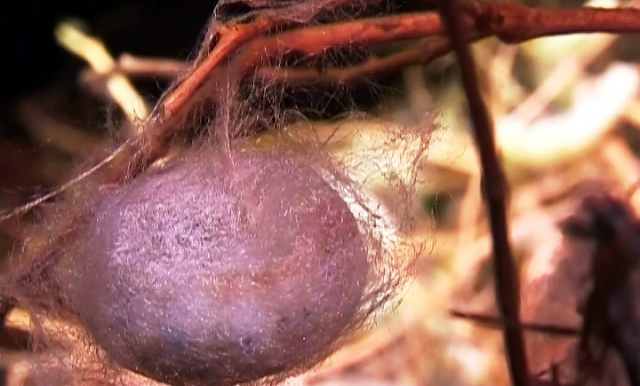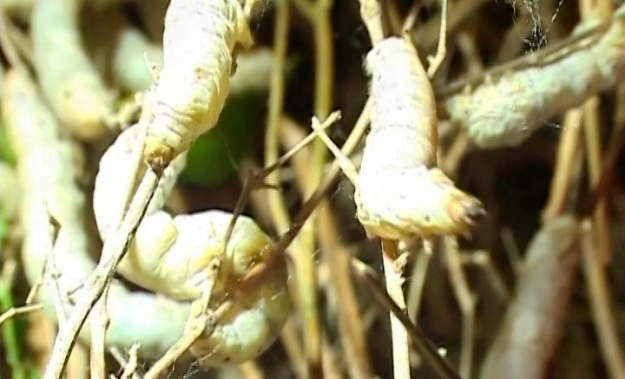Punjab’s home-based silk industry continues to shrink
Silkworms not as healthy nor as productive as they once used to be

Silkworms not as healthy nor as productive as they once used to be.
PHOTO: ZAHOOR AHMED
In fact, the forest is the site where the best silk is prepared in Pakistan. Earlier, people used to nurture silkworms in their homes but due to the poor quality of seeds and the fast declining Mulberry trees, this development has almost come to an end.
About 75km away from Lahore and in the lush green areas of Changa Manga, a woman in a house feeds leaves to the insects that are kept on her bed.
Her name is Sughra Bibi and has been nurturing silkworms in her home for the past many years. She obtains silk cocoons which are called ‘toti’ or ‘kaway’ in local language from these insects. People who nurture silkworms look after them for four to five weeks.
She, however, complains that the seed of silkworms is of low quality these days.
“We raise these insects like children but they start dying when they grow up. It is because of the poor quality of the seeds because of which half of the insects die.
The silk cocoons made by these insects are used to acquire silk. There was a time when every third family dwelling in the vicinity was involved in the silk-production business. At present, however, only a few centres remain to be seen.
 PHOTO: ZAHOOR AHMED
PHOTO: ZAHOOR AHMEDSilk cocoons are first put in hot water and once fibres start emerging from them, they are collected with a homemade machine to obtain thread. One kilogram of cocoon yields around 1200 grams of silk. Although Changa Manga is known to prepare very expensive and high-quality thread, leftover threads that are not in good shape are not discarded either.
In pictures: Tuscan silk weavers still use Da Vinci's original design
Imtiaz, an artisan involved in the silk production business, informed The Express Tribune that he has been associated with the profession for the past 23 years. He laments the fact that though he is involved in the production of silk, his own children cannot afford to wear clothes made up of silk because of their extremely high costs.
Another artisan Muhammad Yasin explained that silkworms consume leaves of the Mulberry tree and remain asleep for a long time. In the last stage of their development, they excrete fibre and then trap themselves in the silk cocoon.
 PHOTO: ZAHOOR AHMED
PHOTO: ZAHOOR AHMED“When this silk cocoon is immersed in hot water to obtain silk, these insects die and in this way, they sacrifice their lives to provide silk to humans,” he said. “There were so many families associated with the profession but now their numbers have considerably declined.”
Officials at the forest, however, told The Express Tribune that about 10,000 families are linked with the business of raising silkworms in different parts of the country. They prepare about 700 tons of silk to earn an amount of more than Rs70 million annually.
Per officials, promoting the silk-making industry will not only bring foreign investment but it will also boost employment within the country.
Published in The Express Tribune, May 22nd, 2019.



















COMMENTS
Comments are moderated and generally will be posted if they are on-topic and not abusive.
For more information, please see our Comments FAQ